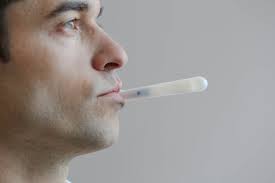Oral Fluid Testing as Proposed by SAMHSA
In today’s Federal Register, besides the changes to the Mandatory Guidelines for Urine based testing, there was an accompanying article that proposed the use of Oral Fluid as a specimen for regulated workplace drug testing. This document has been sought after as oral fluid testing has been in place in non-regulated workplaces.
As mentioned in the other article concerning the Mandatory Guidelines, the use of oral fluid can be adopted by DOT once SAMHSA has finalized and adopted the use of oral fluid.
Comments are sought on the proposed guidelines as there is a 60 day comment period. Comments can be submitted as follows:
SAMHSA, Attention Division of Workplace Programs (DWP)
1 Choke Cherry Rd., Rm. #7-1045
Rockville, MD 20857
Comments may also be submitted electronically to http://regulations.gov. Please follow “Submit a Comment” instructions.
Comments may also be submitted by overnight mail to the above address or hand delivered to the above address. If hand delivering please call ahead to make arrangements for acceptance.
The use of the acronym OFMG will refer to the Oral Fluid Mandatory Guidelines.
A summary of the major provisions are as follows:
- Specimen collection will be under direct observation.
- Split specimens will be required as follows: The specimens can be collected concurrently or serially using separate collection devices or
- Alternatively a collection device that can divide the specimen into two separate specimens.
- All specimens will be tested for IgG (Immunoglobulin G) to ensure that the collected specimen is a valid specimen.
- The use of a urine specimen is authorized provided that the donor cannot provide an oral fluid specimen.
- All testing will be laboratory based with no allowances for on-site testing. That means that there will not be any IITF testing performed using oral fluid specimens.
- All drugs detected with the use of oral fluids will be parent compounds with the exception of 6-acetylmorphine (Heroin metabolite) and Benzoylecgonine (Cocaine metabolite).
- MROs will have to have requalification training and examination on a regular basis, i.e., every five years.
The proposed Mandatory Guidelines does list 113 references that were used for the development of these guidelines for oral fluids.
A big question is what are the proposed screen and confirmatory cutoff levels for the tested drugs? See the table below for the proposed drugs and cutoff levels.
|
Initial test analyte |
Initial test cutoff (ng/mL |
Confirmatory test analyte |
Confirmatory test cutoff concentration (ng/mL |
|
Marijuana (THC) |
4 |
THC |
2 |
|
Cocaine/Benzoylecgonine |
15 |
Cocaine |
8 |
|
Benzoylecgonine |
8 |
||
|
Codeine/Morphine |
30 |
Codeine |
15 |
|
Morphine |
15 |
||
|
Hydrocodone/Hydromorphone |
30 |
Hydrocodone |
15 |
|
Hydromorphone |
15 |
||
|
Oxycodone/Oxymorphone |
30 |
Oxycodone |
15 |
|
Oxymorphone |
15 |
||
|
6-Acetylmorphine |
3 |
6-Acetylmorphine |
2 |
|
Phencyclidine (PCP) |
3 |
PCP |
2 |
|
Amphetamine/Methamphetamine |
25 |
Amphetamine |
15 |
|
Methamphetamine |
15 |
||
|
MDMA/MDA/MDEA |
25 |
MDMA |
15 |
|
MDA |
15 |
||
|
MDEA |
15 |
Of course there are the issues of collectors to be trained then qualified to do the specimen collection. The proposed Guidelines are similar to the current DOT requirements for urine specimen collection.
There are also proposed standards for the collection devices. Those devices will have to be FDA cleared before they can be used. There is included in this the minimum volume for a specimen.
Another key item will the accreditation of laboratories to do the testing of oral fluid specimens. Within the proposed guidelines are the steps that a lab must do to become accredited.
There is much more but those items will be for future discussion.
It will be important to see how the various DOT Modal Agencies will incorporate the use of oral fluid in the testing scheme.
Stay tuned!







